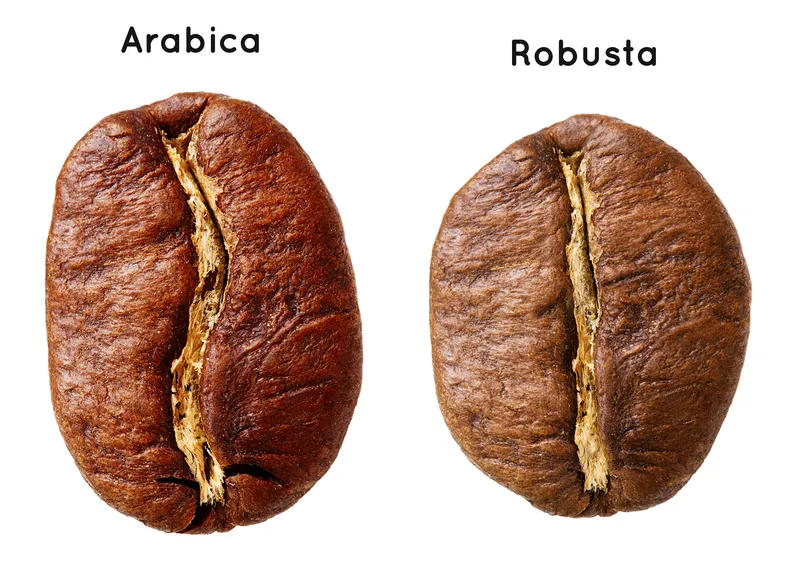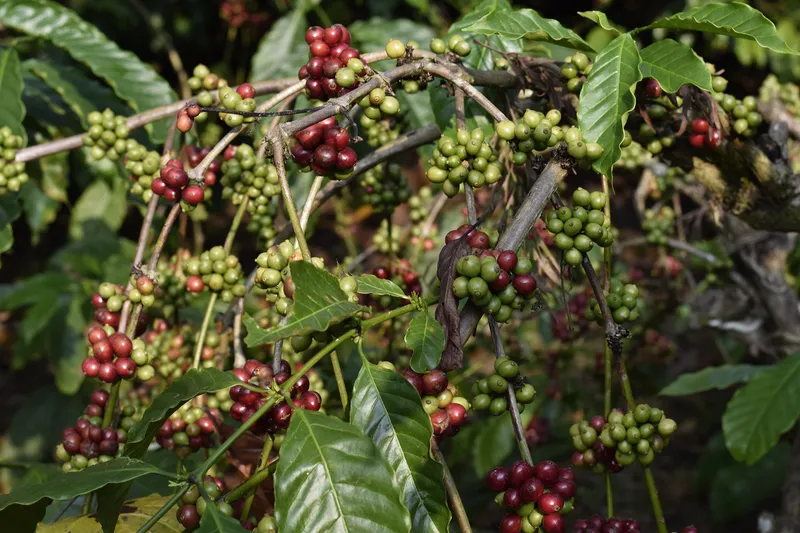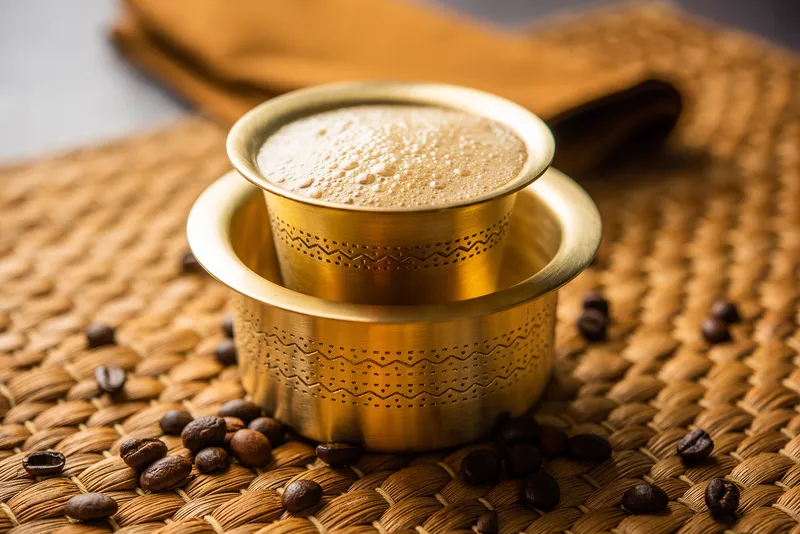The great Indian coffee roast battle: Robusta versus arabica
Dive into the captivating world of coffee with a roast-off between robusta and arabica beans.
In the aromatic world of coffee, two titans have long reigned supreme, each with its distinctive flavour, aroma, and character. The stage is set, and the arena is hot as we embark on a journey to explore the intense coffee roast battle between robusta and arabica beans.
These coffee varieties—originating from different corners of the world—have captivated the hearts and palates of coffee enthusiasts, igniting debates and discussions that rival the fervour of the beans' roasting process itself.

Image source: Shutterstock
But before we delve into the depths of this epic roast-off, let's rewind the clock and travel to India—which has a rich history steeped in the tradition of coffee cultivation.
Origins and growing conditions
India's coffee legacy traces back to ancient times as far as the 16th century, when Sufi saint Baba Budan is said to have smuggled seven coffee beans from the Middle East, planting the seeds of a thriving coffee culture in the southern hills of Karnataka.
The country’s rich coffee culture unfolds like a mosaic of history, tradition, and modernity. The southern states of Karnataka, Kerala, Tamil Nadu, and Andhra Pradesh serve as the heartland of India's coffee plantations, each contributing its essence to the brew.
These verdant regions have embraced coffee cultivation, and their beans have woven their way into the fabric of everyday life. Both arabica and robusta find their unique expression within India's diverse landscapes, offering coffee aficionados an exquisite palette of flavours and aromas.
Arabica beans, often regarded as the aristocracy of coffee, command about 70% of the coffee-growing regions. It finds its sanctuary amid the misty hills of Chikmagalur and Coorg in Karnataka.

Arabica coffee plant | Image source: Shutterstock
Malavika Hegde, the lady who rescued Cafe Coffee Day from a massive 7000 crore debt
These delicate gems thrive in higher altitudes, typically ranging from 1,000 to 2,000 metres above sea level, resulting in beans with a mild acidity and an enchanting flavour profile.
Cooler temperatures and abundant monsoon rainfall bestow upon the arabica plants a remarkable terroir, imparting notes of berries, citrus, and florals to their beans. Its meticulous cultivation demands careful attention to detail, resulting in a refined and sophisticated cup that mirrors the region's natural bounty.
The robusta beans, claiming the remaining 30% of India's coffee production, thrive in the sun-drenched plains of Kerala and Tamil Nadu, withstanding the rigours of India's tropical climate.
Flourishing at altitudes spanning 200 to 800 metres, these beans reveal their character through a bolder and fuller-bodied profile. Its flavours, often characterised by earthy and nutty undertones, speak to its unique ability to withstand heat and adversity of the regions where it thrives.
Indian robusta beans have etched their mark on the country's coffee landscape, contributing notably to the beloved Indian filter coffee tradition. The robusta beans' higher caffeine content creates a bold and invigorating cup, reflecting its resilient spirit.

The beloved Indian filter coffee is made from robusta beans | Image source: Shutterstock
In the bustling streets of Mumbai, a cup of frothy cappuccino made from Indian arabica beans offers a glimpse into the country's fusion of cultures. The mild acidity and intricate flavours dance harmoniously, embodying India's diverse essence.
Meanwhile, on a serene morning in the backwaters of Kerala, a freshly brewed cup of robusta filter coffee carries the promise of a day filled with bold flavours and robust energy.
Flavour profile
Arabica, with its wide array of flavour notes, is like a symphony of deliciousness dancing on one’s taste buds. It is the hints of fruits, berries, chocolate, caramel, and even a touch of acidity that give it a delightful kick.
Robusta, on the other hand, brings a different flavour game to the table. While some may consider this bean more straightforward, it plays a crucial role in the foundation of many espresso blends for its rich crema and high caffeine content.
For those seeking the symphony of arabica's flavours, picture savouring a cup of Ethiopian Yirgacheffe coffee. With its bright acidity and vibrant berry notes, it encapsulates the essence of arabica's intricate taste profile.
Meanwhile, consider a cup of Vietnamese coffee, where robusta takes the lead, where its bold, robust character shines through, accompanied by a touch of chicory. The resulting brew is a testament to the coffee’s tenacity and ability to create a cup that's as strong as it is invigorating.

The robusta takes a lead in a cup of Vietnamese coffee
Caffeine content
Robusta packs a powerful punch with nearly twice the caffeine content compared to arabica. The former typically contains around 2.2% to 2.7% caffeine, while arabica tends to have about 1.2% to 1.5% caffeine.
So, if one is seeking that extra boost to jumpstart their day, robusta might just be their best buddy.
Bitter enemies: pests and diseases
In the wild world of coffee cultivation, pests and diseases are relentless foes.
While Arabica, with its delicate nature, is more susceptible to pests and diseases, requiring intensive protection and care, robusta stands strong against these adversaries, thanks to its natural resilience and higher concentrations of chlorogenic acid that acts as a shield against pests.
Caffeine wars
To conclude, it is essential to remember that the battle between robusta and arabica ultimately boils down to personal preference. Each bean brings its unique characteristics to the table, and coffee lovers worldwide have their reasons to pledge allegiance to one or the other.
Arabica enthusiasts appreciate the refined and complex flavours, while robusta admirers cherish the strong body and caffeine kick. Both have roles in the world of coffee, making it a diverse and vibrant industry with something for everyone.
So, next time you sip your coffee, take a moment to savour the journey of those tiny beans from distant lands, as they come together to create the delightful elixir that fuels our lives and sparks joy in every coffee lover's heart.
Cheers to coffee, in all its glorious forms!
Mridhul Prakash is the Managing Director at Vaishnavi Estate.
Edited by Suman Singh
(Disclaimer: The views and opinions expressed in this article are those of the author and do not necessarily reflect the views of YourStory.)







